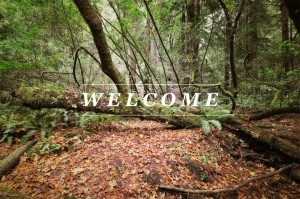
Image courtesy of http://dearestnature.com/blog/2012/03/welcome-giveaway/
In the minds of many people, especially here in the West, there is a tendency to think of “culture” and “nature” as separate and sometimes opposing entities. This separation is evident in the way we often talk about these topics. Certain phenomena are distinctly “cultural” and others are distinctly “natural”. In academia we have a common separation between subjects in the sciences (nature) and subjects in the humanities (culture). The goal of this e-portfolio is, of course, not to assert that we should entirely stop speaking of cultural and natural phenomena. Such distinctions are often useful for the sake of discussion. Rather, the goal of this site is to show that culture and nature are inherently linked, affecting one another constantly, and that any clear division of the two is illusory. Understanding this will lead to a better understanding of our relationship with the rest of the natural world. It will also lead to better, more ethical practices in conservation programs by creating a recognition that local communities count as part of the environment.
Much of my approach to thinking about culture-nature has been influenced by the work of Julian Steward, the founder of the theory of Cultural Ecology. Because of this, I have posted a brief critical abstract of his article on the home page. This way, the visitors of this site will have a clear understanding of where I am coming from.
NOTE: It is highly encouraged for readers to begin with the ‘Origins of the Dualism’ page, then progress to ‘The Problem with the Dualism’, then the ‘Alternative Views’ page. The ‘Culture-Nature in Archaeology’ page is my Special Area Investigation, where I appeal to the archaeological record of prehistoric North America to illustrate the interconnected nature of the human-environment relationship.